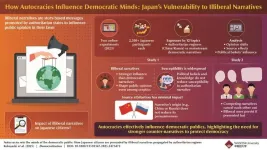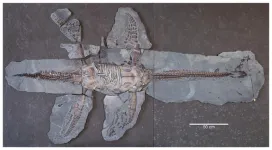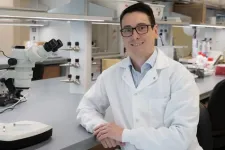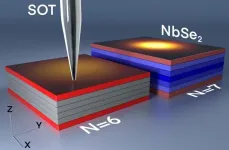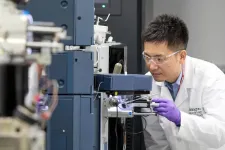(Press-News.org)
An authoritarian regime is a type of government system where power is restricted in the hands of a single leader or a group, limiting the participation of citizens in decision-making. As authoritarian states like China and Russia intensify their global information campaigns, a new study highlights Japan’s vulnerability to illiberal narratives. This research, led by Professor Tetsuro Kobayashi of Waseda University, Research Associate Yuan Zhou of Kobe University, Ph.D. student Lungta Seki of Koç University, and Professor Asako Miura of Osaka University, was published online on March 12, 2025 in the journal Democratization. The study revealed that these narratives are more persuasive than mainstream democratic messaging, revealing potential risks to Japan’s political discourse.
Kobayashi and team examined how Japanese citizens respond to narratives propagated by authoritarian regimes compared to those dominant in democratic societies. Using an online survey experiment, they exposed participants to both types of narratives and measured shifts in opinion. The results were striking: Illiberal narratives exerted a stronger influence than mainstream democratic narratives, even when their sources were explicitly identified. “The results showed that both illiberal and mainstream narratives produced persuasive effects in the intended direction; however, the illiberal narratives tended to have a greater impact than mainstream narratives,” writes Kobayashi.
This finding is particularly concerning given the study’s second key result: The expected moderating effects of political knowledge, authoritarian tendencies, and belief in conspiracy theories were absent among the participants. Unlike a similar study conducted in Germany, where individuals with low political knowledge and strong authoritarian leanings were more vulnerable, Japanese respondents were broadly susceptible to illiberal narratives regardless of their political profile. “The persuasive effects of illiberal narratives were not moderated by the political knowledge of the participants. This suggests that it is not only specific segments of the Japanese population that are influenced by illiberal narratives, but rather that Japanese individuals are broadly susceptible,” writes Kobayashi.
When both democratic and illiberal narratives were introduced together, their effects largely canceled each other. However, when an illiberal narrative followed a democratic one, it retained its persuasive effect. This means that once an illiberal narrative enters public discourse, it may be more difficult to counteract, even in a country where democratic narratives are dominant. This suggests that mainstream narratives do not effectively inoculate the public against later exposure to illiberal messaging.
The implications extend beyond Japan’s domestic politics. As Japan plays a crucial role in the US-led liberal international order, the infiltration of illiberal narratives could have consequences for its foreign policy alignment. If public opinion in Japan shifts in favor of authoritarian states, it could weaken Japan’s support for democratic alliances and international norms.
This raises concerns about Japan’s resilience against cognitive warfare. As authoritarian states refine their influence operations, Japan may need stronger measures to counteract manipulative narratives. “The study highlights the urgency of strengthening democratic resilience by honing effective counternarratives and increasing public awareness of foreign influence tactics,” concludes Kobayashi. If left unaddressed, the spread of illiberal narratives could undermine trust in democratic institutions and shift public opinion in ways that favor authoritarian interests, underscoring the urgency of fostering media literacy and public awareness to safeguard democratic discourse in an increasingly contested information space.
***
Reference
DOI: 10.1080/13510347.2025.2475472
Authors: Tetsuro Kobayashi1, Yuan Zhou2, Lungta Seki3, and Asako Miura4
Affiliations:
1School of Political Science and Economics, Waseda University
2Graduate School of Law, Kobe University
3Graduate School of Social Sciences and Humanities, Koç University
4Graduate School of Human Sciences, Osaka University
About Waseda University
Located in the heart of Tokyo, Waseda University is a leading private research university that has long been dedicated to academic excellence, innovative research, and civic engagement at both the local and global levels since 1882. The University has produced many changemakers in its history, including nine prime ministers and many leaders in business, science and technology, literature, sports, and film. Waseda has strong collaborations with overseas research institutions and is committed to advancing cutting-edge research and developing leaders who can contribute to the resolution of complex, global social issues. The University has set a target of achieving a zero-carbon campus by 2032, in line with the Sustainable Development Goals (SDGs) adopted by the United Nations in 2015.
To learn more about Waseda University, visit https://www.waseda.jp/top/en
About Professor Tetsuro Kobayashi
Dr. Tetsuro Kobayashi is a Professor at Waseda University's School of Political Science and Economics. He earned his Ph.D. in social psychology from the University of Tokyo in 2009. Before joining Waseda University, he held positions at the National Institute of Informatics in Japan and the City University of Hong Kong. His research interests encompass political communication, political psychology, and public opinion. Kobayashi's research has been published in prestigious peer-reviewed journals spanning the fields of political science, communication, and psychology.
END
A nearly complete specimen of Plesiopterys wildi from Germany provides fresh insights into plesiosaur diversity and regional specialisation
A newly described plesiosaur fossil from southern Germany is providing crucial evidence about the diversification of these ancient marine reptiles during the Early Jurassic. Published in PeerJ Life and Environment, the study details the discovery and analysis of an exceptionally well-preserved Plesiopterys wildi specimen, which offers new clues about the evolution and geographic distribution of plesiosaurs in Europe nearly 180 million years ago.
Unearthed ...
HOUSTON – (March 31, 2025) – A chance discovery led a team of scientists from Rice University, University of Cambridge and Stanford University to streamline the production of a material widely used in medical research and computing applications.
For over two decades, scientists working with a composite material known as PEDOT:PSS, used a chemical crosslinker to make the conductive polymer stable in water. While experimenting with ways to precisely pattern the material for applications in biomedical optics, Siddharth Doshi, a doctoral student at Stanford collaborating with Rice materials scientist Scott Keene, ...
Vienna, Austria- 31 March 2025 - While everybody’s heart has an absolute chonological age (as old as that person is), hearts also have a theoretical ‘biological’ age1 that is based on how the heart functions. So someone who is 50 but has poor heart health could have a biological heart age of 60, while someone of 50 with optimal heart health could have a biological heart age of 40.
Researchers presenting a new study today at EHRA 2025, a scientific congress of the European Society of Cardiology (ESC), demonstrated that by using artificial intelligence (AI) to analyse standard ...
WOODS HOLE, Mass. -- Humans like to think that being multicellular (and bigger) is a definite advantage, even though 80 percent of life on Earth consists of single-celled organisms – some thriving in conditions lethal to any beast.
In fact, why and how multicellular life evolved has long puzzled biologists. The first known instance of multicellularity was about 2.5 billion years ago, when marine cells (cyanobacteria) hooked up to form filamentous colonies. How this transition occurred and the benefits it accrued to the cells, though, is less than clear.
This week, a study originating from the Marine Biological Laboratory (MBL) presents a striking example of cooperative ...
Researchers have discovered an unexpected superconducting transition in extremely thin films of niobium diselenide (NbSe₂). Published in Nature Communications, they found that when these films become thinner than six atomic layers, superconductivity no longer spreads evenly throughout the material, but instead becomes confined to its surface. This discovery challenges previous assumptions and could have important implications for understanding superconductivity and developing advanced quantum technologies.
Researchers at the Hebrew University of Jerusalem have made a surprising discovery about how superconductivity ...
Researchers have developed new AI models that can vastly improve accuracy and discovery within protein science. Potentially, the models will assist the medical sciences in overcoming present challenges within, e.g. personalised medicine, drug discovery, and diagnostics.
In the wake of broadly available AI tools, most technical and natural sciences fields are advancing rapidly. This is particularly true in biotechnology, where AI models power breakthroughs in drug discovery, precision medicine, gene editing, food security, and many other research areas.
One sub-field is proteomics – the study of proteins on a large scale – where ...
A newly developed blood test for Alzheimer’s disease not only aids in the diagnosis of the neurodegenerative condition but also indicates how far it has progressed, according to a study by researchers at Washington University School of Medicine in St. Louis and Lund University in Sweden.
Several blood tests for Alzheimer’s disease are already clinically available, including two based on technology licensed from WashU. Such tests help doctors diagnose the disease in people with cognitive symptoms, but do not indicate the ...
Plate temperature and water release can explain the occurrence of different types of earthquakes in Guerrera, Mexico. The Kobe University simulation study also showed that the shape of the Cocos Plate is responsible for a gap where earthquakes haven’t occurred for more than a century. The results are important for accurate earthquake prediction models in the region.
Where one tectonic plate is pushed down by another, the resulting stress is released in various tectonic events. There are catastrophic megathrust earthquakes, unnoticeable “slow slip events,” and continuous low-frequency “tectonic tremors,” and knowing ...
Scientists have found another reason to put the phone down: a survey of 45,202 young adults in Norway has discovered that using a screen in bed drives up your risk of insomnia up by 59% and cuts your sleep time by 24 minutes. However, social media was not found to be more disruptive than other screen activities.
“The type of screen activity does not appear to matter as much as the overall time spent using screens in bed,” said Dr Gunnhild Johnsen Hjetland of the Norwegian Institute of Public Health, ...
In the face of major changes to federal policy and funding in the United States, Canada should support Canadian researchers with adequate funding to ensure long-term research in health and science, argue authors in two articles published in CMAJ (Canadian Medical Association Journal).
“As the US stands on the brink of tearing down its exemplary system for covering the full costs of research, Canada, with its flawed federal system for indirect costs, should heed the recent commissioned science policy report and a chorus of advocacy calling for an enhanced indirect cost system,” writes Dr. William Ghali, vice-president ...
